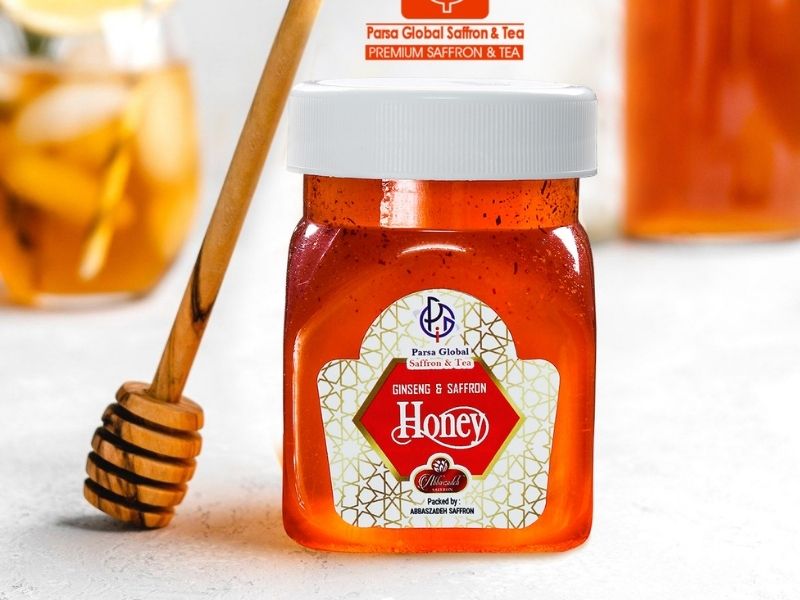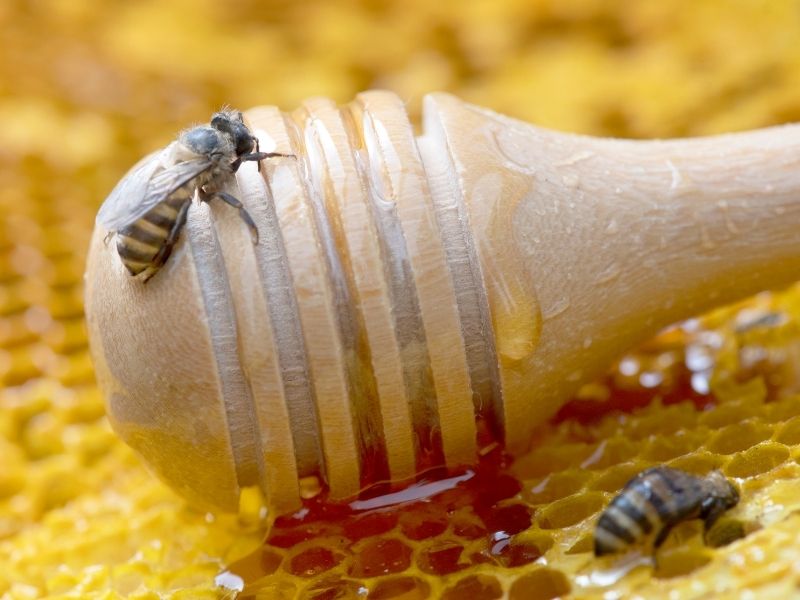If you’re interested in how Bees make honey? We’d recommend reading this post.
Aside from man, nothing in the world compares to the extraordinary efficiency of the honeybee industry. Each bee has a specific function to complete inside the hive, and the entire process operates smoothly.

Bees' Nutrition:
Bees require two types of nutrition. One is nectar honey, created from the sweet juice accumulated in the flower’s heart. The other originates from flower anthers, which contain many tiny grains known as pollen. Pollen, like flowers, comes in a variety of colours.
First Step:
Let’s follow the honeybee from her blossom to the hive and watch what happens. The majority of bees solely collect nectar or pollen.
She keeps the nectar inside her unique honey stomach, ready to get transmitted to the hive’s honey-making bees. If she becomes hungry, she opens a valve in the nectar “sac,” allowing a portion of the cargo to flow through to her stomach, where it is transformed into energy for her own needs.
The honeybee is a fantastic flying mechanism. She can carry a nectar or pollen payload close to her weight. When you consider that even the most advanced aircraft can only take off with a load that is one-quarter of its weight, the honeybee’s ability to stay aloft with such a load is nothing short of a miracle.

Second Step:
The honeybee returns to the hive when her nectar “sacs” is complete. Nectar is delivered to one of the inside bees and transmitted from bee to bee mouth-to-mouth until the moisture content is lowered from roughly 70% to 20%. As a result, the nectar becomes pure honey. Because the 32.5°C temperature within the hive causes considerable evaporation, nectar is sometimes stored in cells in the honeycomb before mouth-to-mouth functioning.
Third Step:
Finally, in preparation for the arrival of newborn baby bees, the honey is deposited in storage cells and covered with beeswax. Pollen is combined with honey and fed to the larvae as “bee bread.” If the bee population is to thrive, the newborn bees require a protein-rich diet.
The bee combs clean and looks for herself before returning to the bloom for more pollen. She does this not because she is vain but because it allows her to work more efficiently. The bee will work relentlessly during her life cycle, collecting pollen, bringing it back to the hive, cleaning herself, and then going out in search of more pollen.
When forager bees are three weeks old, they leave the hive searching for bloom patches. Unfortunately, they have a lot of work to do and a short amount of time to do it because they only live to be six or seven weeks old.
Many more bees will be working simultaneously, and their droning will fill the air. It takes around three weeks for 300 bees to collect 450 g of honey. A hive houses about 40,000 bees on average.

 Herbal Tea Bags
Herbal Tea Bags Premium Dried Fruit
Premium Dried Fruit